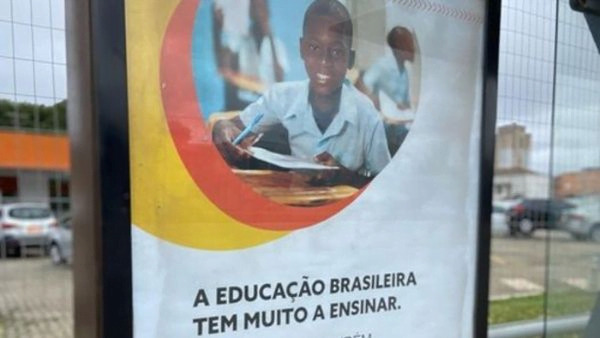
In the same period of the COVID-19 pandemic some 650,000 children dropped out of school, which, according to civil organizations, contributes to the crisis of illiterate children. | Photo: Twitter @todoseducacao
Brasilia, February 9 (RHC)-- The two years of the COVID-19 pandemic in Brazil leave a balance of just over one million children between 6 and 7 years old who have not learned to read or write, a growth of 66 percent according to data from the Continuous National Household Sampling Survey, conducted by the Brazilian Institute of Geography and Statistics (IBGE) and whose results were released this Tuesday.
According to the research, the number of non-literate children increased from 1.4 million to 2.4 million between 2019 and 2021, which they attribute to the effects of the COVID-19 pandemic, which has been affecting Brazilian public education for two years.
In relative terms, the percentage of 6- and 7-year-old children who, according to their parents, did not know how to read and write rose from 25.1 percent in 2019 to 40.8 percent in 2021.
According to the executive director of the non-governmental organization Todos Pela Educação, Olavo Nogueira Filho, "literacy is the basis of a successful school career and the earlier the better. A student who cannot learn to read and write is compromised in his or her career for the rest of his or her life."
In turn, according to the head of the Education Policy area of Todos Pela Educação ,Gabriel Correa, "the increase in the number of children who cannot read or write, in the perception of their parents, alerts about the need for actions by the Government of Jair Bolsonaro to mitigate the damages of the pandemic in Education."
According to the survey, it is also possible to observe a relevant difference between children living in the richest and poorest households in the country. Among the poorest children, the percentage of children who did not know how to write increased from 33.6 percent to 51.0 percent between 2019 and 2021. Among the richest children, the increase ranged from 11.4 percent to 16.6 percent.
It was also evident that black and mixed-race children, who already had worse indicators, were even more impacted by the effects of the COVID-19 pandemic. The difference between the percentage of white and black children who could not read or write increased from 8.5 percentage points to 12.3 between 2019 and 2021. It also transpired that some 650,000 children dropped out of school during the same period.

